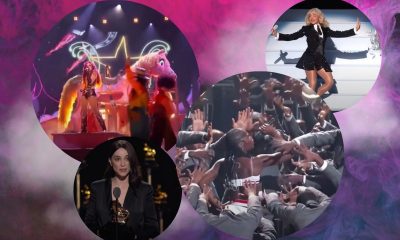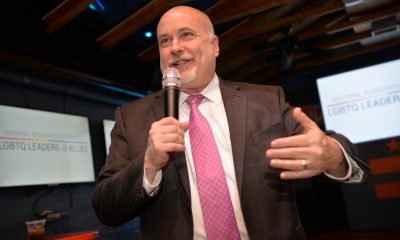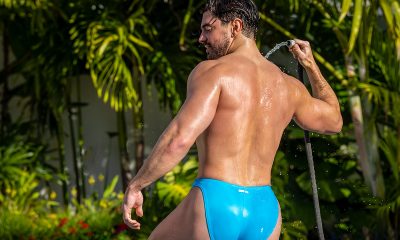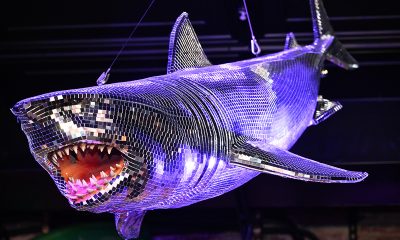a&e features
Ain’t life Grand
‘All American Boy’ on funneling fame into something sustainable
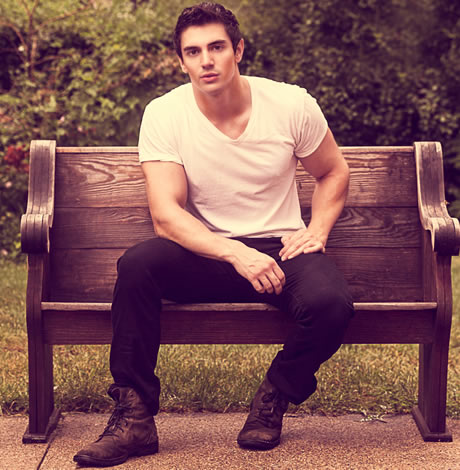
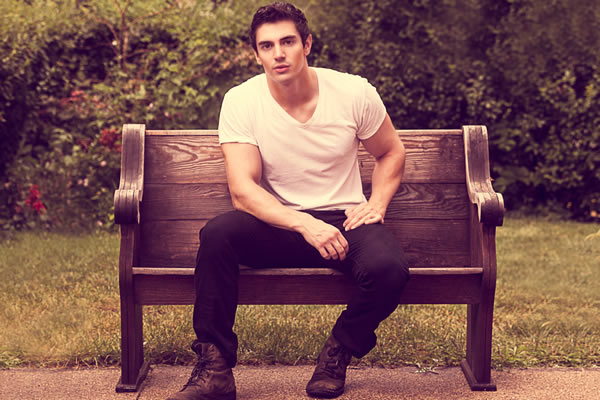
Singer Steve Grand says he is not driven by financial payoff when making music. (Photo by Christopher Free)
Steve Grand says it’s become trendy for gay celebs to come out in an “oh-by-the-way”-type manner. The 25-year-old singer/songwriter says that was never his style.
“People say this is no big deal anymore, who cares,” he says. “You know who cares? The kids who are still really struggling with this. The kids who feel like they would still rather be dead than live life as a gay person. I’m thinking about them all the time when I’m doing these things because deep down, we all just want to be loved. … We want to feel valued and understood.”
In 2013, the Chicago native took $7,000 of his own money to make a music video for his song “All-American Boy.” The now-famous clip — nearly 4 million YouTube hits logged — found him jamming roots-rock style (many called it country) and pining for a straight friend. Now having raised $325,000 from 5,000 fans through a Kickstarter campaign, Grand is releasing a 13-track album of the same name. The Aaron-Johnson-produced project is slated for a March 24 release. We caught up with Grand from his Chicago home by phone. His comments have been slightly edited for length.
WASHINGTON BLADE: Nobody sets out to be a one-hit wonder. You seem like you’re on a logical path to spinning the attention from the video into a sustainable career. How easy or hard has that been so far?
STEVE GRAND: I think I did a good job of keeping my feet on the ground. I went through the whole viral Internet star thing and that was big for a short time. I fumbled a bit in interviews and was trying to figure out if I was going to do shows right away, work on an album. There really was no plan and looking back it seems almost like a hindrance that the video and song came together so beautifully because I don’t think people realized it was really just me doing all that. People suddenly had all these really high expectations right away and I didn’t have a team, no manager, label, it was just something I did all myself with my own money made from playing bars on weekends. … It gave me a good jumpstart and exposed my music to a lot of people right off the bat and connected with a lot of people. I have to be grateful for that but it has a dark side too, for sure.
BLADE: Obviously the video wasn’t just something you did off the cuff. How calculated was it?
GRAND: I really wanted to start a grassroots kind of thing and I thought if I put it out there and people responded, that would be a good start to establishing myself as an artist so I just started asking around, finding people who did videos and eventually I met up with (director) Jason Knade. … I think I really stretched everyone and got a lot for my money. I was very passionate about it and I really cared about getting that song and video out to the world … but no, it wasn’t calculated in terms of anything after. I’ve said this a few times and it doesn’t seem to really stick, but I really did just upload it to YouTube and put it on Facebook and then the Internet did its thing. I wasn’t even sure who to reach out to. I remember thinking, “Oh, maybe I should e-mail Davy Wavey or something,” but it just did its own thing. Buzzfeed got it the next day and said I was the first openly gay country singer and I was like, “What?” I never really stood by that title but I was glad people were seeing it.
BLADE: When was it filmed and how long did it take?
GRAND: We filmed it in June of 2013 and shot it over three days. It was really hard trying to find a yard that we could bring all my friends as extras and have a place that looked like open roads and a campfire and light off fireworks and not get in trouble. I had so much trouble getting a place. No one wants to lend their place to a bunch of 23 year olds with cameras, fireworks and alcohol, but we did end up finding a place in Wisconsin through a friend of a friend. I invited like 200 people knowing maybe 30 would show up and I was right. We shot two days back to back, then a week later shot the stuff in a friend’s yard where it looks like the morning after with the fire and the garbage. Then we edited it right away.
BLADE: I guess people were skeptical because it looked so professionally done. So many essentially homemade videos end up looking so cheesy. How did you avoid that?
GRAND: Well, I insisted on looking at all the footage we shot even though nobody wants to do that because it’s so crazy, but I insisted. I was like, “Give me the footage.” I wanted to be sure we had absolutely the best shot of everything so I spent hours and hours going through it. I also really needed it to be up by the Fourth of July, that was my plan, me being calculating I guess. I thought that was the best time to release it so we had a very limited amount of time. The editor had his first edit, then we spent eight hours going over everything making tweaks. … I really just knew exactly how I wanted it to look and I knew the feeling I wanted people to have and how to achieve that. I was very inspired and very determined and also lucky to have some very talented people to help. … I drove myself nuts, though. My parents were starting to get really worried. They were like, “It’s a little scary how you’re so intense about this.” I wasn’t sleeping or eating, which honestly is why I look so ripped in the video. It was really going over every last detail right up until the last minute.
BLADE: When hip-hop made its mark on pop, country started sounding a lot like where pop/rock was in the ‘90s. Do you think that’s why you got the country sticker?
GRAND: Yeah, live drums, acoustic guitar now, people think country. And also the storytelling style and a lot of the visuals with American flags, old cars, friends by the fire, whisky — those are very country images I guess. I just think of them as Americana. I’ve never gotten too hung up on what it’s called. … If it sounds country to you, that’s fine. … I’m just all about making the song really shine and bringing out the beautiful raw elements of the song.
BLADE: There’s a lot of industry hand wringing about whether albums are obsolete. Why was it important to you to make one?
GRAND: It was something I always wanted to do. After “All American Boy” came out people were like, “You made it, you made it.” I’m like, “I haven’t done anything yet.” Until I have an album out and have played all over the country and the world, then I’ll feel I’ve done what I’ve wanted to do since I was 12. Right after “All American Boy,” all these offers came in, all this stupid shit like reality TV and you know, people saying you have to decide today what you want your career to be like. … My thinking all along was if I’m a good songwriter and a good performer and I think there’s an audience out there for me, if that is all true, then there should still be something left when this moment fades away.
BLADE: Will you tour?
GRAND: Yeah, later in the spring. We’re doing this thing in Europe for two weeks in June and the rest is being put together now.
BLADE: How did you feel watching Sam Smith at the Grammys?
GRAND: It was amazing and a testament to where we are today, which is a beautiful thing. I thought about what it would have meant to me as a young person to have seen something like that — Sam Smith just owning the Grammys, that was amazing. He’s obviously just so, so good and the industry has really embraced him. People everywhere just seem to really like him.
BLADE: What album did you wear out when you were 12-13-14?
GRAND: Fall Out Boy, “Take This to Your Grave.” I listened to that like crazy. That’s when that whole pop-funk-emo thing was happening.
BLADE: You played a lot in clubs and churches. What did you learn?
GRAND: How to be in front of people and give them an experience even when I wasn’t feeling it. You learn to perform and be on whether you’re having a bad day, hung over, sometimes sick, whatever. I learned it was my job to still play and make people happy.
BLADE: There’s no money in having a huge YouTube hit and not that I sense you’re doing all this for the money but surely in time you want to be able to sustain yourself doing this. You put a lot of money into the video. Was it worth it?
GRAND: Anytime somebody thinks I’m doing this for the money, I just laugh forever. I actually moved out of my apartment and back into my parents’ basement because I wanted to keep investing in myself and not throwing hundreds of dollars away for an apartment I was barely at anyway because I was spending so much time traveling to L.A. and recording. People have all sorts of priorities and so far, mine has been putting out something beautiful in the world, something people will connect to and giving people an experience. … I don’t care about living a glamorous life.
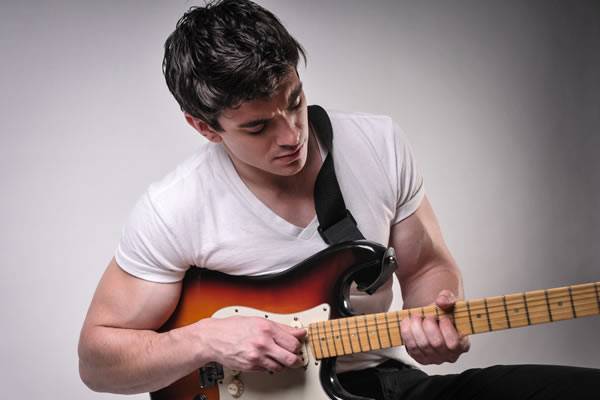
Steve Grand says he knew his ‘All American Boy’ video would be successful. (Photo by Joem Bayawa)
BLADE: You’ve done a lot of scantily clad photo shoots. Do all the underwear shots risk undermining a serious career?
GRAND: Those were all done when I was 19, so like six years ago. I didn’t do drugs or anything. My way of rebelling was taking off my clothes. I don’t own them and don’t choose my Google search so there’s nothing I can do about it. I’m not ashamed of them and I don’t feel like they’re any big deal … but most of the time now I don’t care how I look. Sometimes I’ll do a show now and people say, “Take off your shirt.” The only time I did that was for the ALS Ice Bucket Challenge in Lake Superior. But now, I don’t really care about showing off my body.
BLADE: Whatever ingredients are needed to launch a successful pop career in 2015 — whatever combination of looks, talent, and so on, to say nothing of drive, it would seem you were dealt a pretty good hand in life. Would you concur?
GRAND: Oh yeah, I’m never one to downplay that, absolutely. We’re not all dealt the same hand. I think I’m lucky to a certain extent but also lucky to have work ethic and passion and to care about what I do. … You really have to be in this for the right reasons because if you’re not, it’s just not worth it.
BLADE: You’ve said before in interviews you were not dating but focusing on career development. Is that still the case?
GRAND: Absolutely. And even if I was, I wouldn’t say. I like to keep some things to myself. I love life and sex and all that, but that’s for me.
a&e features
Your guide to D.C.’s queer New Year’s Eve parties
Ring in 2026 with drag, leather, Champagne, and more

With Christmas in the rear view mirror, we can turn our attention to ringing in a much-anticipated New Year with a slew of local LGBTQ parties. Here’s what’s on tap.
Pitchers
This spacious Adams Morgan bar is hosting the “Pitchers’ Perfect New Year’s Eve.” There will be a midnight Champagne toast, the ball drop on the big screens, and no cover, all night long. The bar doesn’t close until 4 a.m., and the kitchen will be open late (though not until close). All five floors will be open for the party, and party favors are promised.
Trade
D.C.’s hottest bar/club combo is leaning into the Shark motif with its NYE party, “Feeding Frenzy.” The party is a “glitterati-infused Naughty-cal New Year’s Even in the Shark Tank, where the boats are churning and the sharks are circling.” Trade also boasts no cover charge, with doors opening at 5 p.m. and the aforementioned Shark Tank opening at 9 p.m.. Four DJs will be spread across the two spaces; midnight hostess is played by Vagenesis and the two sea sirens sensuously calling are Anathema and Justin Williams.
Number Nine
While Trade will have two DJs as part of one party, Number Nine will host two separate parties, one on each floor. The first floor is classic Number Nine, a more casual-style event with the countdown on TVs and a Champagne midnight toast. There will be no cover and doors open at 5 p.m. Upstairs will be hosted by Capital Sapphics for its second annual NYE gathering. Tickets (about $50) include a midnight Champagne toast, curated drink menu, sapphic DJ set by Rijak, and tarot readings by Yooji.
Crush
Crush will kick off NYE with a free drag bingo at 8 p.m. for the early birds. Post-bingo, there will be a cover for the rest of the evening, featuring two DJs. The cover ($20 limited pre-sale that includes line skip until 11 p.m.; $25 at the door after 9 p.m.) includes one free N/A or Crush, a Champagne toast, and party favors (“the legal kind”). More details on Eventbrite.
Bunker
This subterranean lair is hosting a NYE party entitled “Frosted & Fur: Aspen After Dark New Year’s Eve Celebration.” Arriety from Rupaul Season 15 is set to host, with International DJ Alex Lo. Doors open at 9 p.m. and close at 3 p.m.; there is a midnight Champagne toast. Cover is $25, plus an optional $99 all-you-can-drink package.
District Eagle
This leather-focused bar is hosting “Bulge” for its NYE party. Each District Eagle floor will have its own music and vibe. Doors run from 7 p.m.-3 a.m. and cover is $15. There will be a Champagne toast at midnight, as well as drink specials during the event.
Kiki, Shakiki
Kiki and its new sister bar program Shakiki (in the old Shakers space) will have the same type of party on New Year’s Eve. Both bars open their doors at 5 p.m. and stay open until closing time. Both will offer a Champagne toast at midnight. At Kiki, DJ Vodkatrina will play; at Shakiki, it’ll be DJ Alex Love. Kiki keeps the party going on New Year’s Day, opening at 2 p.m., to celebrate Kiki’s fourth anniversary. There will be a drag show at 6 p.m. and an early 2000s dance party 4-8 p.m.
Spark
This bar and its new menu of alcoholic and twin N/A drinks will host a NYE party with music by DJ Emerald Fox. Given this menu, there will be a complimentary toast at midnight, guests can choose either sparkling wine with or without alcohol. No cover, but Spark is also offering optional wristbands at the door for $35 open bar 11 p.m.-1 a.m. (mid-shelf liquor & all NA drinks).
a&e features
Local, last-minute holiday gift ideas
Celebrate the season while supporting area businesses

The DowntownDC Holiday Market is bustling. Union Station is decked out with its annual Christmas tree. Washingtonians have wrapped their houses and apartment balconies with festive lights and holiday decorations. The holiday season is here. And with stockings to fill and empty space under the tree, Washington’s local shops and artists have plenty to offer.
Show your LGBTQ and D.C. pride with the Washington Blade’s annual holiday gift guide.
To embrace the holiday buzz: The Blanco Nwèl cocktail from Alchy Cocktails. This Caribbean eggnog is one of Alchy Cocktail’s seasonal holiday cocktails. The flavor profile is similar to coquito, a traditional Puerto Rican Christmas drink with a coconut base. As a queer and Caribbean-owned business, Alchy Cocktails has been based out of Washington since 2021. Blanco Nwèl is available in both cocktail ($24) and mocktail ($12) online and at a variety of holiday markets, including the Tingey Plaza Holiday Market, the Flea Market at Eastern Market, Union Station’s Main Hall Holiday Market, and more. ($24)
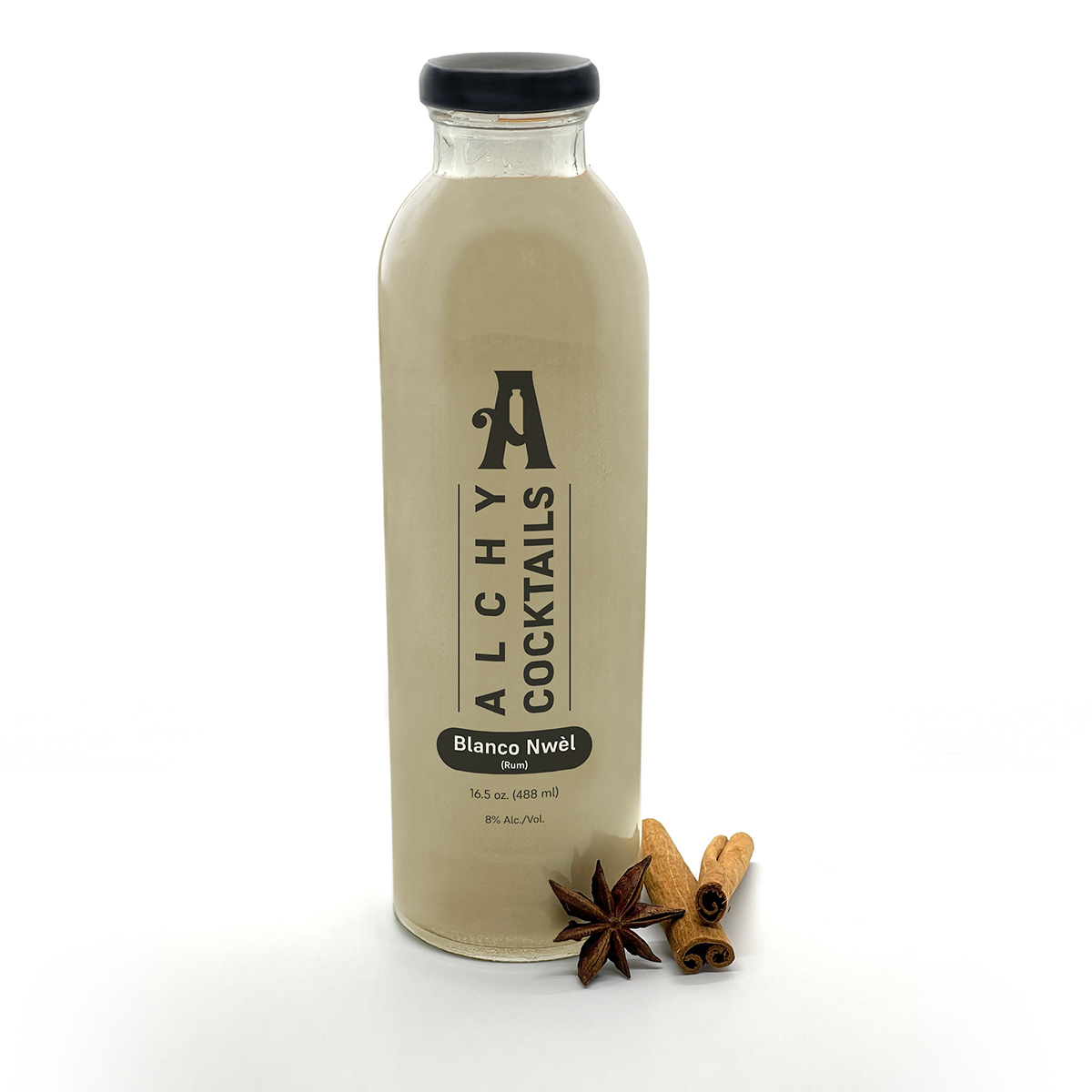
A spicy bite: Gordy’s Cajun Okra from Salt and Sundry. These spicy, tangy pickles pull on Southern Cajun-style flavors, packing a punch with paprika, cayenne, and more. Gordy’s is an LGBTQ-owned and Washington-based brand, making this gift an opportunity to support a local LGBTQ business straight from the jar. This pantry staple is available on Salt & Sundry’s website and at its locations in Union Market, Logan Circle, and its Georgetown holiday pop-up store. ($14)
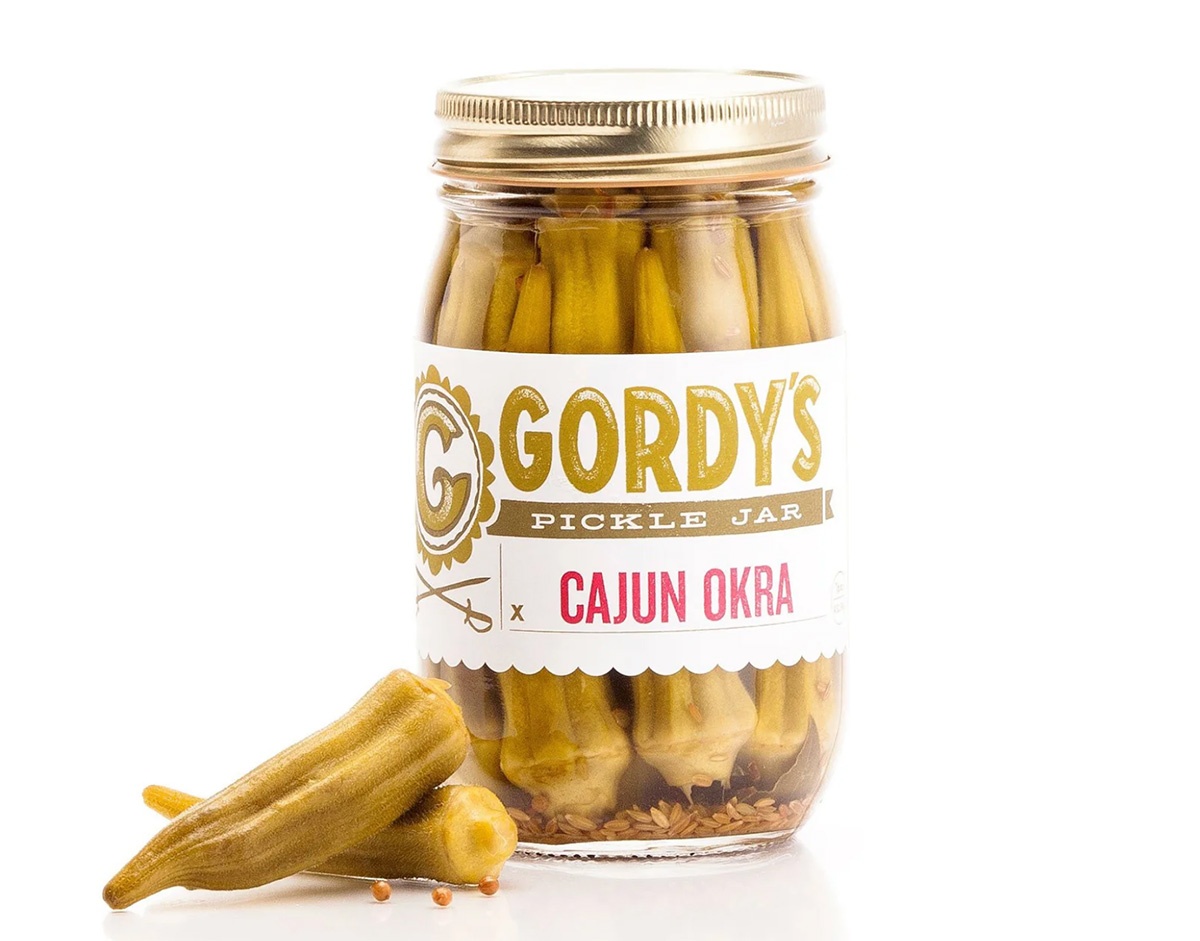

To celebrate Washington pride: The DC Landmark Tote Bag from The Neighborgoods. Native Washingtonians, visitors, friends and family alike will find something to love about this Washington-themed tote bag. Food trucks, the 9:30 Club, the Metro logo and pandas from the National Zoo are just some of the city’s landmarks depicted across the tote in a red, white, and blue color palette. The tote is a part of the DC Landmarks collection, which donates 10 percent of its sales to the American Civil Liberties Union. The Neighborgoods itself is a local, woman-owned business built out of a passion for screen-printing in 2013. The 100 percent cotton canvas tote is for sale online or at the DowntownDC Holiday Market. ($22)
To give friends and family their flowers: The Flowers Bandana from All Very Goods. This 100 percent cotton bandana was designed in Washington and hand printed in India. Its uniqueness comes in being covered with the faces of Black women, representing a “love letter to all women but especially Black women,” according to All Very Goods. The Black woman-owned and operated business, based out of Northwest Washington, has a mission to celebrate diversity and representation through its products. The bandana intends to give Black women their “flowers.” The Flowers bandana is available for purchase online. ($24)
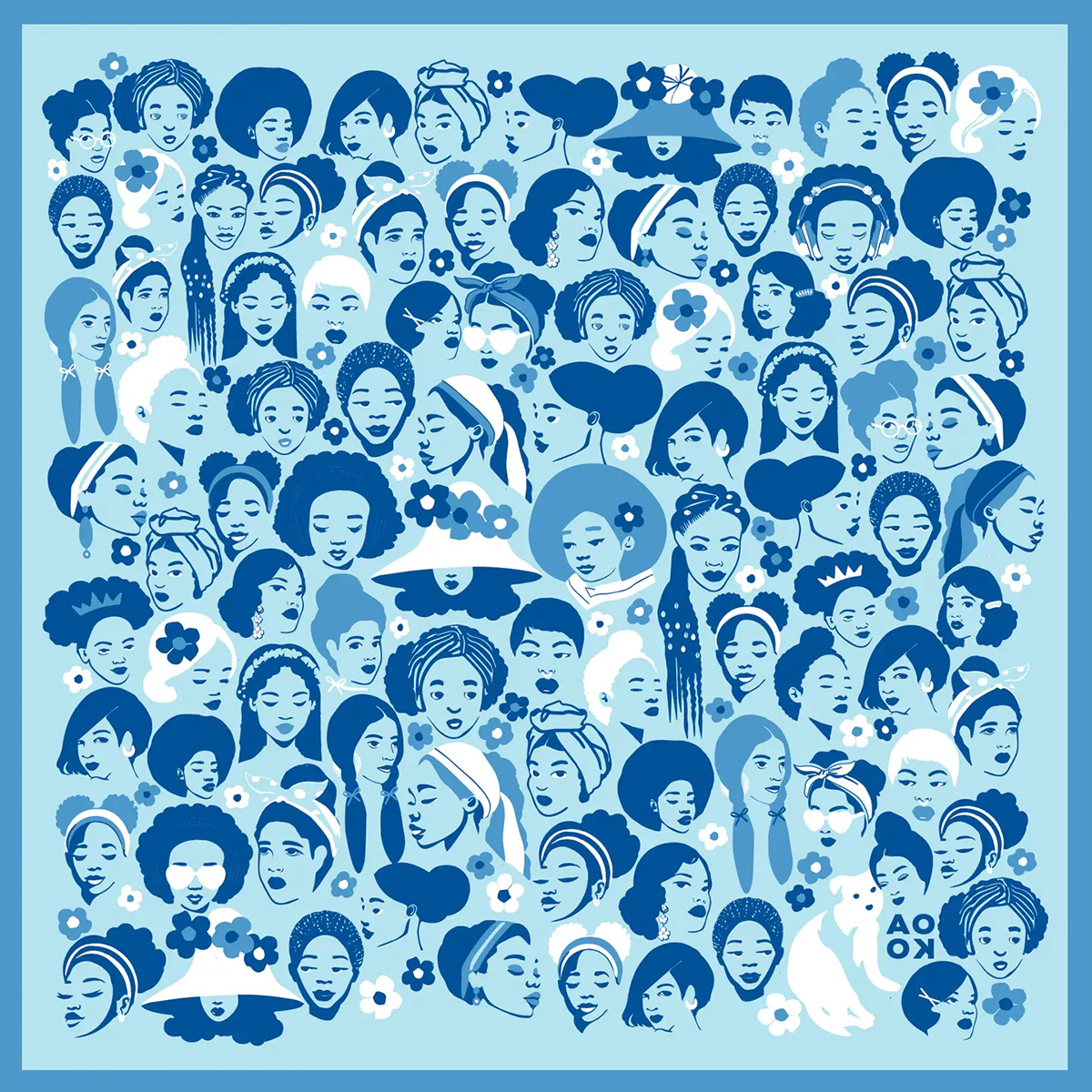
To unlock culinary creativity: The Curious Chef Gift Collection from Each Peach Market. This customizable collection of kitchen oddities — ranging from tinned fish to chili oil — is a quirky gift for the most inventive chefs. The collection is available in a Standard Santa, Extra Goodies and Super Holiday Size for up to $165. The Washington-based market, founded in 2013, permits customers to make the collection special by specifying what unique ingredients are packaged, including products made by local or LGBTQ brands. Each Peach Market offers assembly and pick up in-person at its Mount Pleasant shop and also offers local delivery and nationwide shipping via its website. ($85)
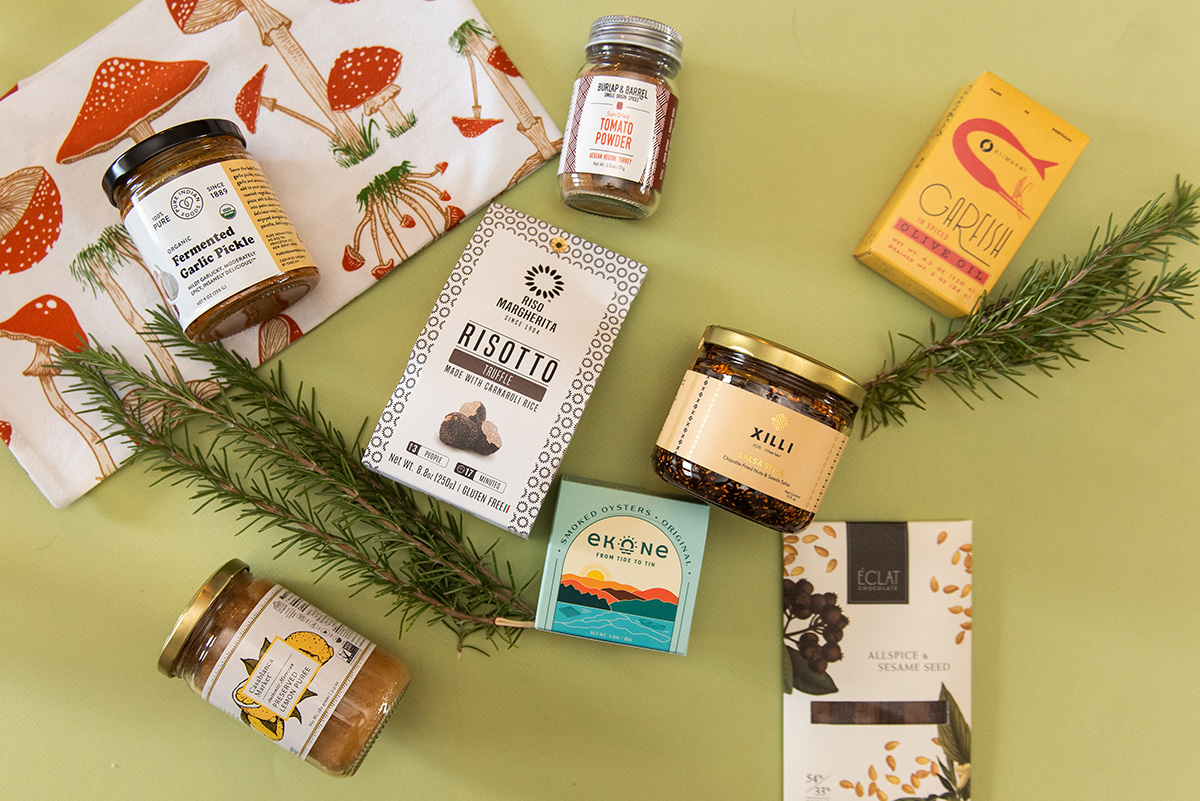
To give a touch of sweetness: The DC Landmark Chocolate Covered Oreo Holiday Cookies from Capital Candy Jar. Wrapped in a festive red bow, this box of nine cookies embraces love for Washington and the holiday season in one. Among the dark and milk chocolate covered cookies are images of the U.S. Capitol, the White House, the Lincoln Memorial, the Jefferson Memorial and festive hollies. The treat, packaged in a Hill East facility just a few blocks from the Capitol, is available for purchase online and at the DowntownDC Holiday Market. ($23.95)
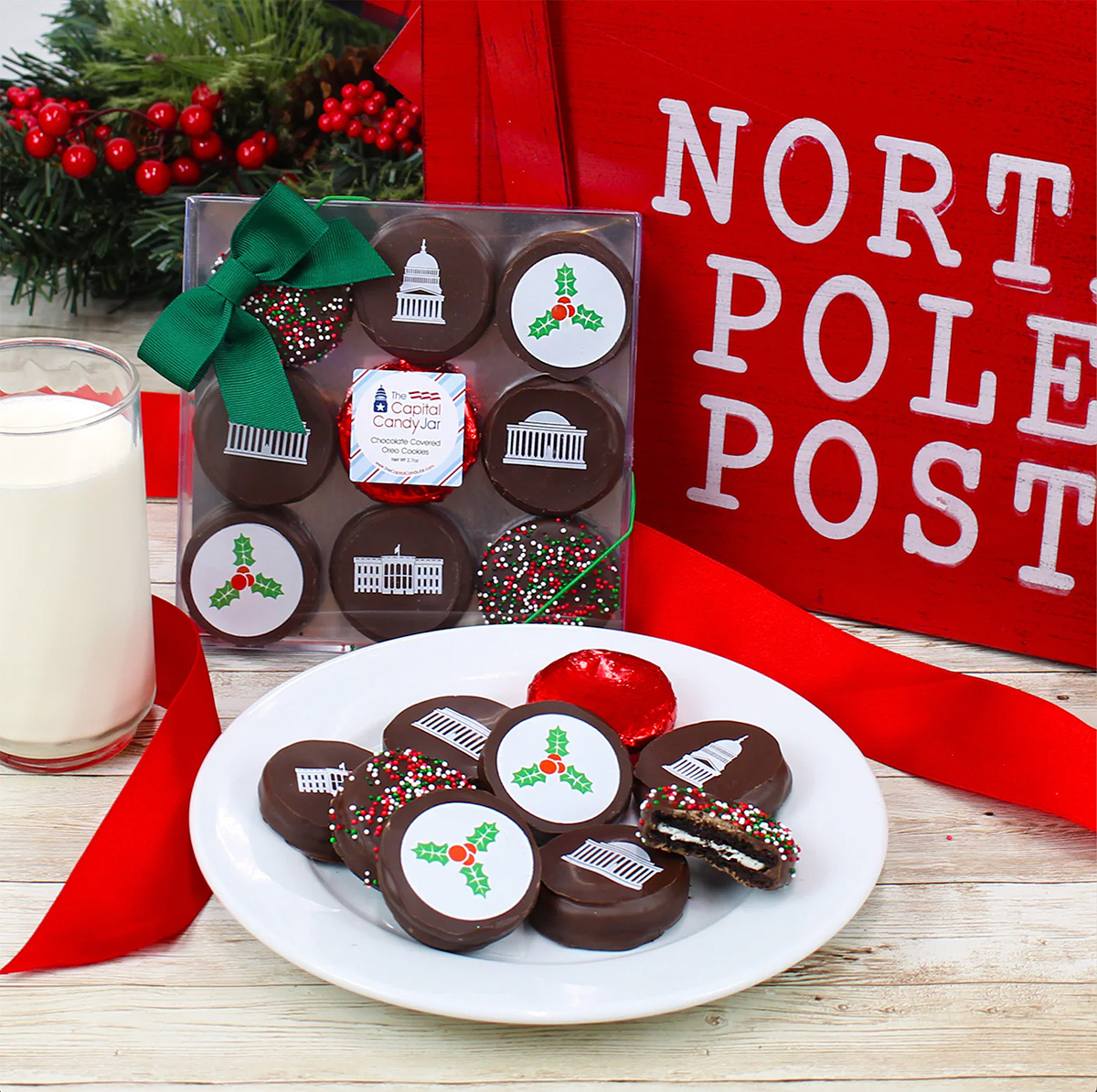
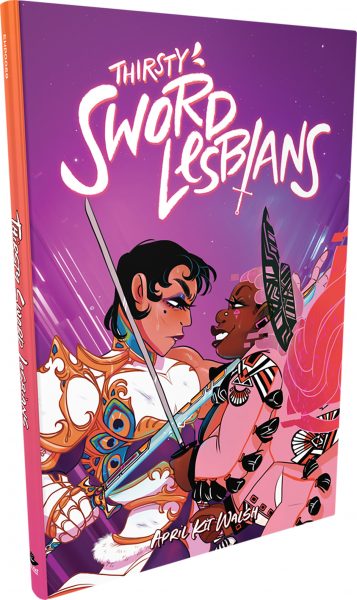
To celebrate queer gaming: Thirsty Sword Lesbians from Labyrinth Games & Puzzles. This roleplaying game embraces lesbian culture by unlocking a world of swords, romance, and battle. Ideal for group settings, the book presents a system of world building and character identities that are best brought to life by creative minds. Labyrinth, which has been a local Washington business for more than 15 years, celebrates non-digital fun through games and puzzles that connect the community. This gift is offered online and at Labyrinth’s Capitol Hill location. ($29.99)
To make a bold statement: The “Resist” T-shirt from Propper Topper. This locally screen-printed black tee features the Washington flag designed within a raised fist, symbolizing both Washington pride, and political resistance. The shirt is made exclusively by Propper Topper, a local Washington business that evolved from a hat shop to a gift store since opening in 1990. The tri-blend unisex shirt is available both for pickup at Propper Topper’s Cathedral Heights location and shipping via the online site. ($32)
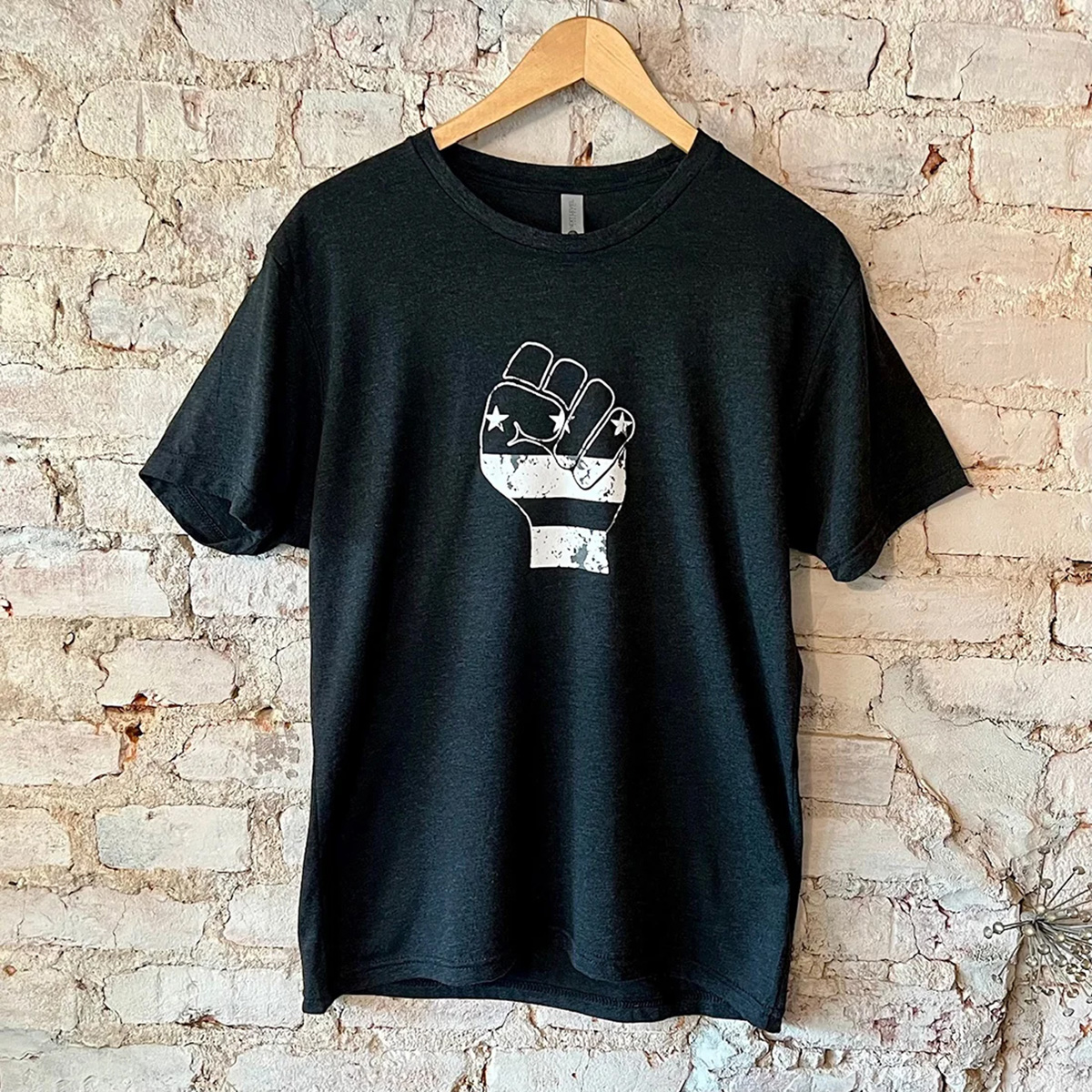
To keep it c(g)lassy: The Glass Ball earrings from Blue Moon Aquarius. Gifting can rarely go wrong when it comes to a new pair of earrings. The unique statement earrings — made of polymer clay, glass, and 18k gold plating over surgical steel — are hand cut, sanded and assembled in Washington, meaning each set is unique. Blue Moon Aquarius, a local brand, is known for its small batch jewelry and home decor designed with clay materials. Available in oxblood, hunter green, lavender, and bluestone color palettes, these earrings are available for purchase on Blue Moon Aquarius’ website and at the DowntownDC Holiday Market. ($48)
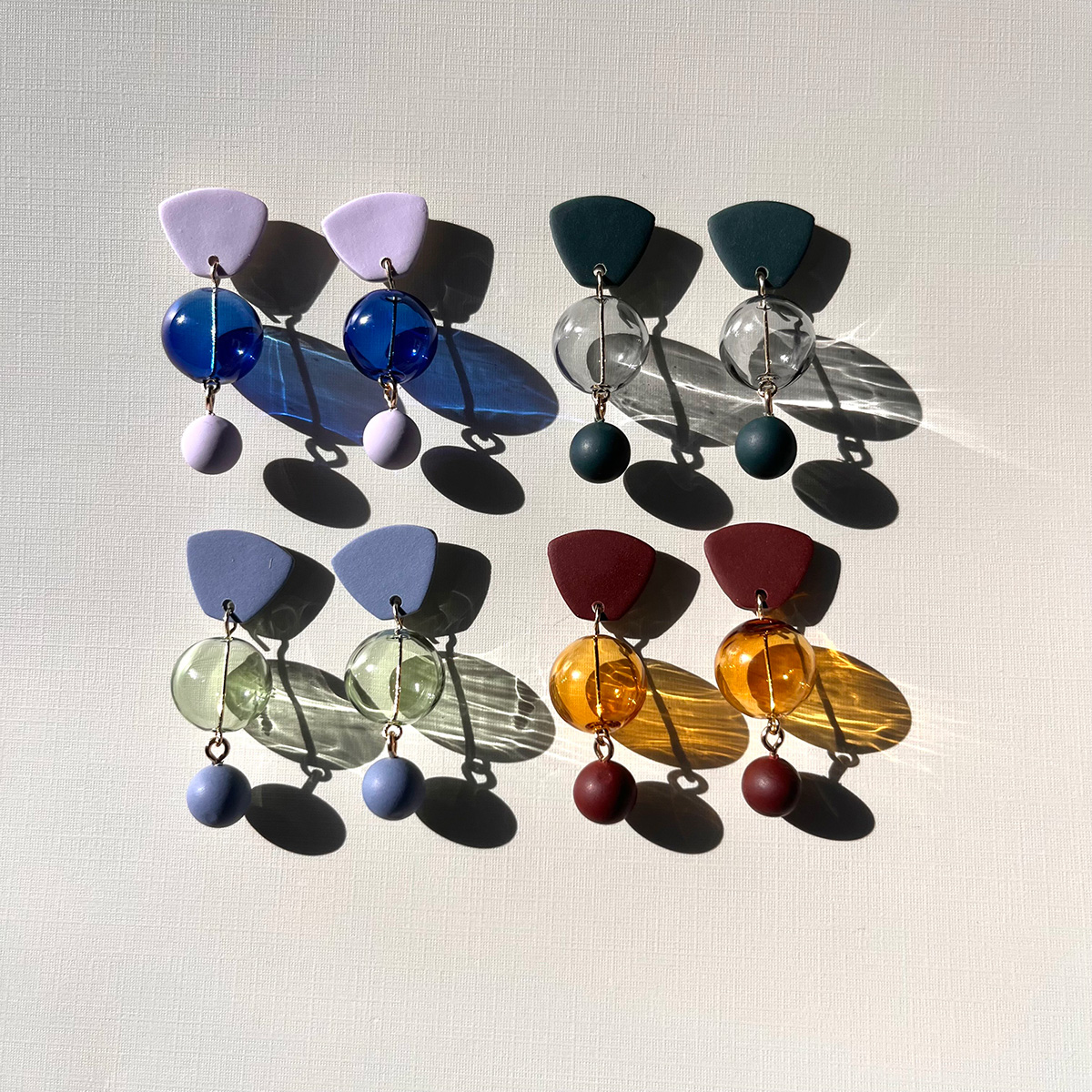
To elevate a holiday tea or charcuterie party: The Honey Flight: Tea Lover’s Selection from BannerBee. This local honey company presents the ideal gift to make cozying up with a cup of tea slightly more special. The Honey Flight contains three types of raw wildflower honey infused with fair trade Ugandan vanilla bean, chai spices, and locally sourced lemon thyme herb. The gift is also an opportunity to uplift a family company based in the Mid-Atlantic that offers all-natural, sustainable products. The flight is available online, at the DowntownDC Holiday Market or at the Arlington Courthouse and Dupont Farmers’ Markets. ($36)
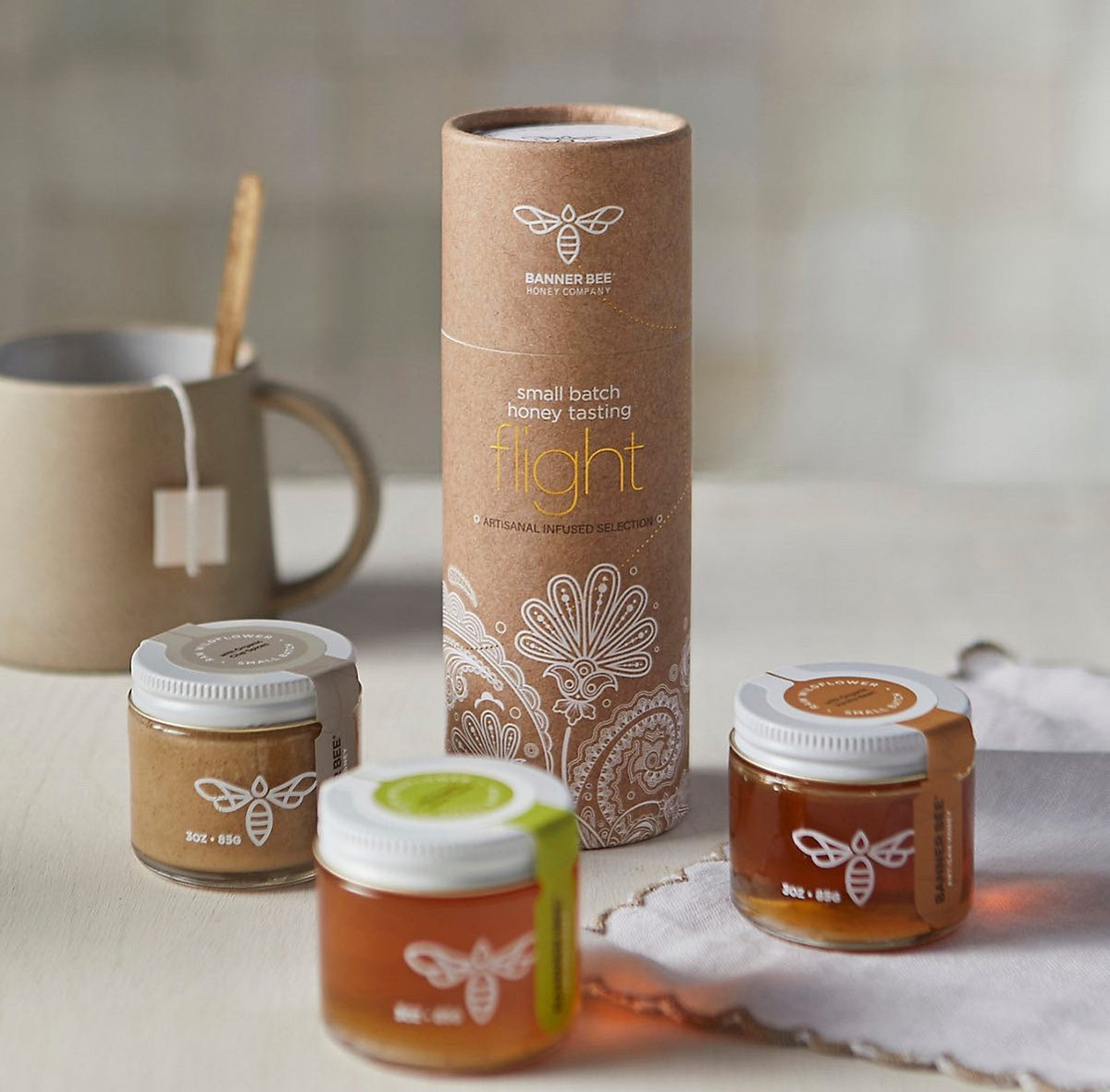
For Baltimore shoppers: If you’re in Charm City, don’t miss Balston Mercantile, opened by a gay couple in June. Their gorgeous shop in the Hampden neighborhood offers an array of unique, upscale finds, from barware and artwork to cookbooks and home decor and more. (849 W. 36th St.)
a&e features
Have yourself a merry John Waters Christmas
Annual holiday show returns to Alexandria and Baltimore
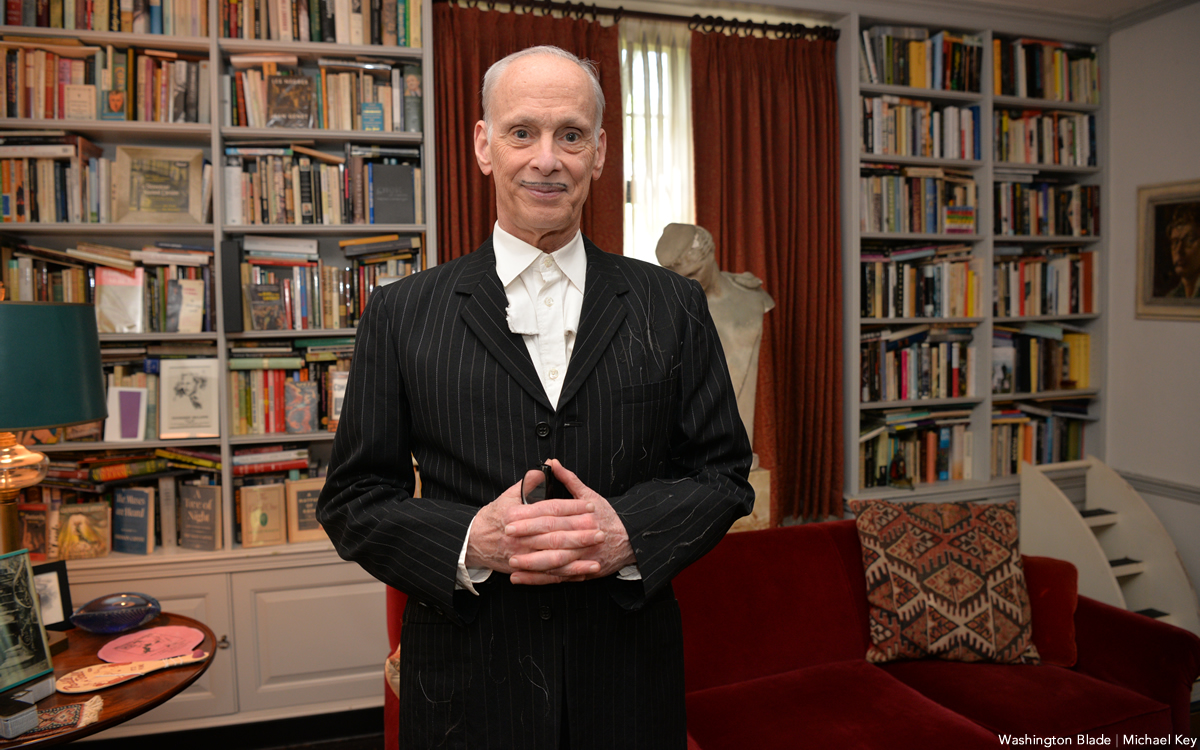
When it comes to iconic Christmas scenes in movies, none can top the tree-toppling tantrum thrown by cha-cha heels-deprived Dawn Davenport in John Waters’s fifth full-length feature “Female Trouble” from 1974. Therefore, it’s not surprising that Waters continues to make art out of Christmas, performing his spoken word Christmas tour in cities across the country. Waters has even more reason to celebrate with the release of his new red vinyl 7” single, a cover of Little Cindy’s “Happy Birthday Jesus (A Child’s Prayer)” on the A-side, and “A Pig Latin Visit From St. Nicholas” on the B-side. If you’re still looking for unique Christmas gifts, consider this record. As always, John was kind enough to make time for an interview in advance of his tour dates.
BLADE: John, in preparation for this interview with you, I went back and listened to Little Cindy’s original rendition of “Happy Birthday Jesus (A Child’s Prayer)” on your “A John Waters Christmas” CD.
JOHN WATERS: One thing I did, if you notice, I make the same stumble in my recording that she did in the original.
BLADE: It sounded to me like she got choked up.
WATERS: No, I think she just stumbles over a word, so I stumbled over the same word. It’s appropriation, insanely.
BLADE: Is this a song you first became aware of in your youth or when you were an adult?
WATERS: When I was doing the Christmas album, I had this friend named Larry Benicewicz. He was kind of my idea man with music. He knew every single old record. I would say to him, “Weird Christmas songs,” when we were doing a soundtrack, or a song about bears, or a song about this, and he would give me all these tapes. It was one of the ones he played for me. A lot of the songs I put in my movies and on my records, I did know as a kid. I did not know this one, but I immediately embraced it. I don’t think it’s campy. I think it really is spiritual in a weird way. My doing it makes it a novelty record. I am really for novelty records, and there aren’t any anymore. Why was there not a COVID novelty record? That’s insane. The dance “The Bug” that’s on the “Hairspray” soundtrack would be perfect for COVID.
BLADE: The thing that struck me was that for a Christmas song in the voice of a child, a kind of death pall hangs over it, with lines like, “If I was good you’d let me live with you” and “they nailed you to the cross, they wanted you to die.”
WATERS: All of it! When I see children at midnight mass kneeling in front of a nude man nailed to a cross, I feel like I’m at The Eagle! It is S&M, it’s creepy. I took the same cover (photo) from her record to parody and put my face on it. The same thing I did with The Singing Dogs last year when I covered (their version of) “Jingle Bells.” I’m really into novelty records. I love them and I’m trying to bring them back. I don’t expect anybody to ever play these records. Even The Singing Dogs one said on it, “Please do not play this record” [laughs]. And the flipside, the Pig Latin version, is almost impossible to listen to.
BLADE: I’m so glad you mentioned that. “A Pig Latin Visit From St. Nicholas” reminded me of the lost art of speaking in Pig Latin. I also recall watching the PBS series “Zoom” as an adolescent and learning to speak “ubbi dubbi,” a distant relative of Pig Latin. Do you think that the time is right for a Pig Latin or ubbi dubbi revival?
WATERS: Here’s the thing, I never could pick up any language, except Pig Latin. I’ve been in every foreign country. Foreign countries have given me money to learn to speak the language. I can never do it! But Pig Latin…my parents and other parents in the ‘50s spoke Pig Latin so kids couldn’t understand what they were saying. Then my mother taught it to me, and I used it. The hardest take to shoot in “Pink Flamingos” was not eating the dog shit. It was when the cast skipped, in one take, saying “E-way, are-yay e-they ilthiest-fay eople-pay in-hay e-they ole-hay ide-way orld-way.” We’re the filthiest people in the whole wide world in Pig Latin. We had to do so many takes so they could do it once without screwing it up. In “Polyester,” Edith (Massey) answers the phone, “ello-hay.” I did a photo piece where it was all subtitled in Pig Latin. Like “osebud-Ray” (from “Citizen Kane”) or in “Streetcar,” “ella-Stay!” [Laughs] All the iconic dialogue translated into Pig Latin. My assistant who helped me do it, had never heard of Pig Latin. She really got good at it because she lived in many foreign countries and can pick up languages. But it’s not that easy to do it correctly and read it. Your computer will translate into Pig Latin.
BLADE: AI understands Pig Latin?
WATERS: I guess that’s AI. It wasn’t 100% right, but it was close. I can speak it if I look at it, but just do a bit at a time. It was a challenge that no one would possibly care about or want to do.
BLADE: I think you pulled it off very well.
WATERS: If you want people to leave on Christmas morning, you put it on. That’s how you get your guests to leave. It’s time to go.
BLADE: Ood-gay i-bay! How did your relationship with record label Sub Pop, which released 2021, 2022, 2024, and new 2025 holiday singles, come about?
WATERS: I believe the first thing I did for them was “Prayer to Pasolini.” They came to me through Ian Brennan. He’s won a couple Grammys for World Music, but he is also is one of my agents who does the Christmas tour and a lot of my shows, anything with music. He helped me arrange each one of the songs. He had a relationship with Sub Pop. It was perfect. My friends in Baltimore, (the band) Beach House, have had huge success.
BLADE: That’s right, they’re on Sub Pop!
WATERS: Yes! I’m happy to be on it. I’ve even been to the warehouse and posed for pictures like Jackie Suzanne used to do.
BLADE: Is there any chance that “A John Waters Christmas” might be reissued on vinyl by Sub Pop?
WATERS: No. It’s such a nightmare to get the rights and to renew them. You have to find the publisher and the writer, and they usually hate each other. It doesn’t matter if it’s obscure or famous, it’s hard to get. You have to make the deal. The singer doesn’t get anything unless they play it on the radio. It would be so complicated legally, and there would be such a [laughs] tiny audience for it. I hope it will come out again. The same thing with the one for Valentine’s Day. I had two of them that did quite well when they came out; “A Date With John Waters and “A John Waters Christmas.” The “John Waters Christmas” album is still the soundtrack that plays whenever I’m doing my spoken word Christmas show as people are entering the theater.
BLADE: Aside from your annual Christmas show tour, what else do you do for the holidays now, and are there any traditions that you’ve carried over from your family?
WATERS: Certainly! I have two sisters, my brother’s widow, and me, so there are four and we take turns each year to have the Christmas dinner. Mine was last year. An entire sit-down dinner. Mom’s China, the silverware, the entire full dinner. It’s pretty traditional. I don’t have a Christmas tree, but I do decorate the electric chair from “Female Trouble.” That is a tradition in my family. We do have Christmas decorations, but they’re usually weird ones that fans sent me. I have one with Divine knocking over the Christmas tree, and the Christmas tree lights up, all sorts of amazing things. There is definitely a tradition here that might be a little altered, but it is definitely a tradition. I used to have a giant party every year, but COVID ended that. I still wouldn’t want 200 people in my house breathing right now.
BLADE: I was looking at your tour schedule and wondered if there are any new cities in which you’ve never performed the John Waters Christmas show that have been added to this year’s schedule?
WATERS: I don’t think there’s a city in America in which I haven’t done one show! The only places I haven’t been to are Hawaii and Alaska. I could do it there, but it’s too long on a tour. I can’t think of a city I haven’t played in in America over the last 50 years. The Christmas show is completely different every year. It doesn’t matter if you saw it last year.

